Category Strategy Procurement
In the realm of procurement, especially among category managers, the task of devising category strategies that are both cost-effective and efficient can lead to headaches. The issue becomes more daunting for enterprises that handle a variety of direct and indirect categories across their business units. A common hurdle is the lack of clear understanding regarding the effectiveness of strategies applied to each category and their actual benefits to the organization.
While the category management strategy can vary to align with specific organizational needs and objectives, it must incorporate certain key elements to enhance profitability and bolster resilience. Among the vital steps in this process is defining a comprehensive plan that details spending across different segments, suppliers, business units, and geographical regions
We'll run you through the necessary steps below
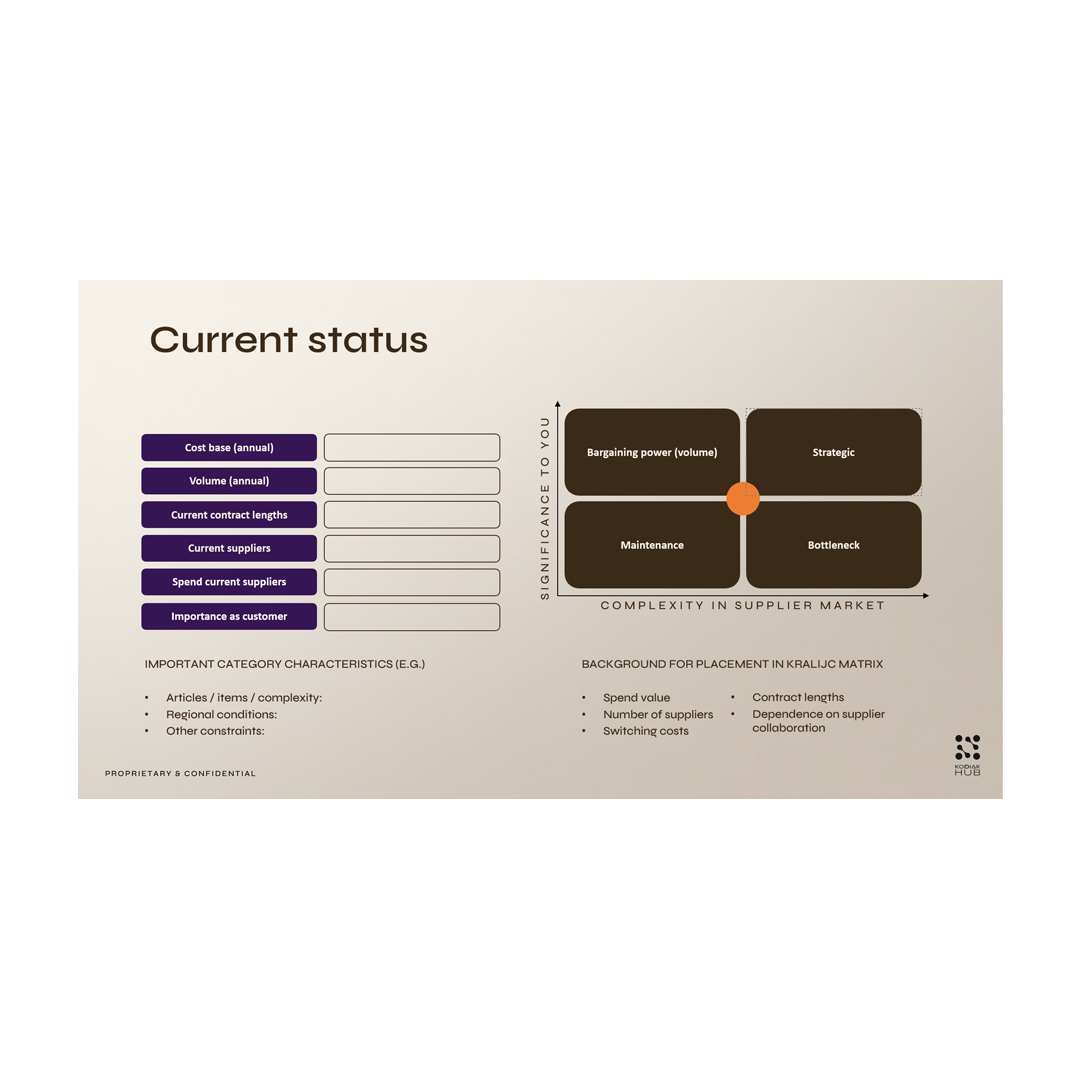
1. Analyze the Current Status
Leverage your expenditure data to assess the status of different categories. Key questions to address include the size of the spend (both in terms of value and volume), duration of contracts, suppliers, and your significance as a customer to these suppliers. Often, it's beneficial to evaluate the importance of each category to your business and to understand the complexities within the relevant supplier market.
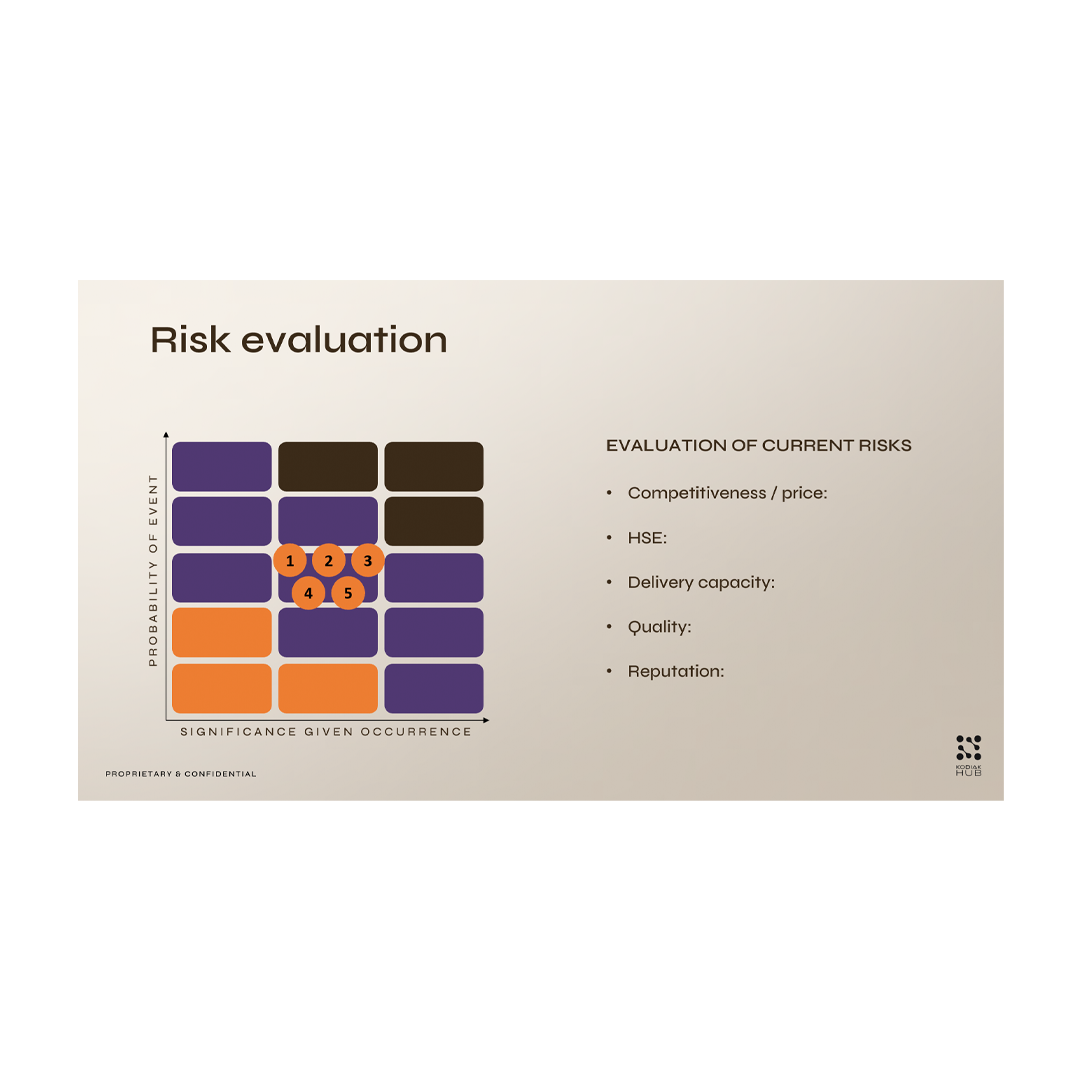
2. Evaluate Risk
Begin by collaborating with your team to identify the most critical risks associated with the category in question. Once these risks have been clearly identified, the next step is to construct a risk matrix. This matrix should categorize each risk by scoring them according to their probability of occurrence and their potential impact or significance.
This structured approach not only helps in visualizing the risks in an organized manner but also aids in prioritizing them effectively, ensuring that the most significant risks are addressed with appropriate urgency. This process is crucial in developing a strategic approach to managing and mitigating potential setbacks in the category.
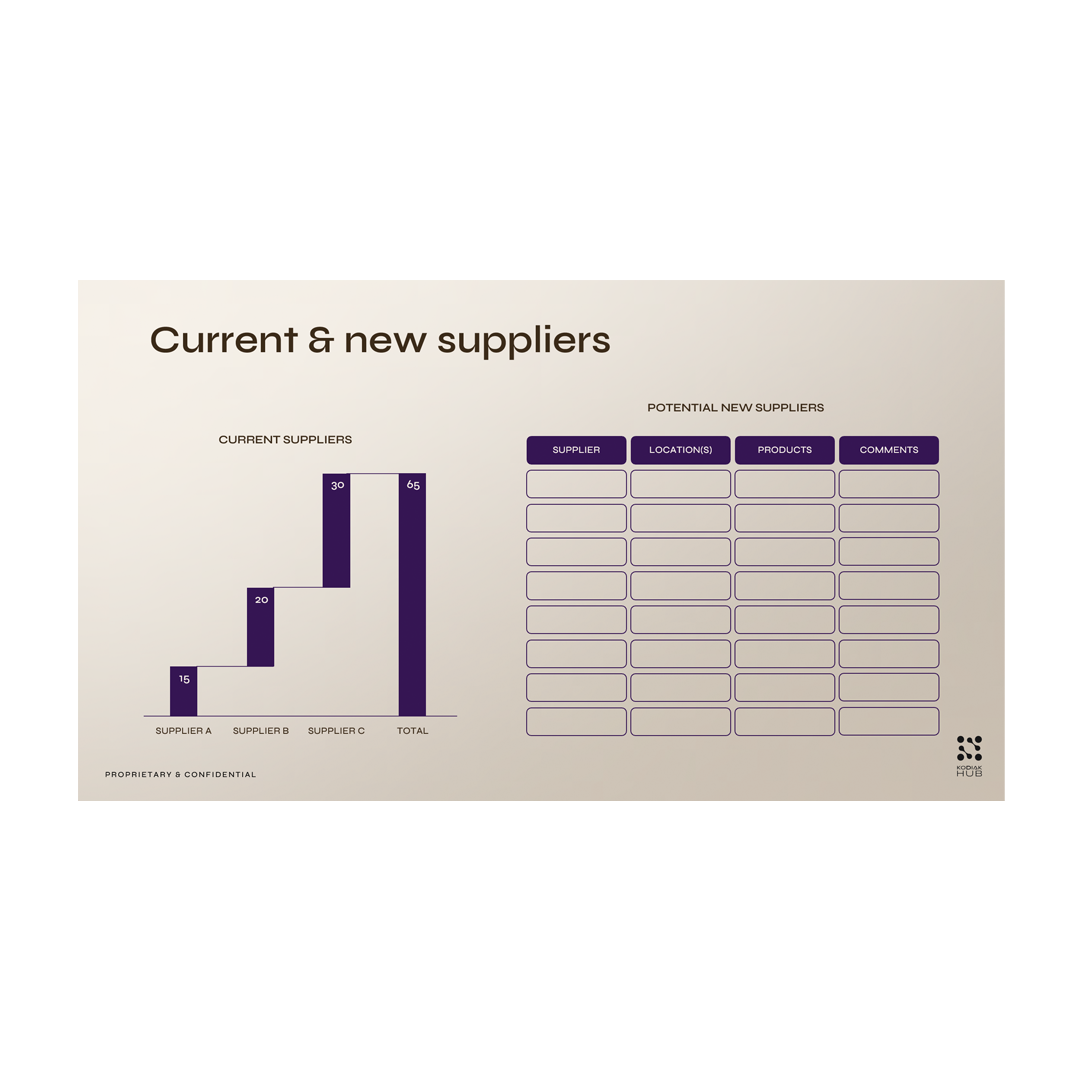
3. Identify Current & New Suppliers
To thoroughly understand the current market dynamics, it's essential to familiarize yourself with the landscape of alternative suppliers. Begin by identifying potential suppliers, noting their geographic locations as well as the specific products or services they offer. This will give you a clearer picture of the options available and how they might fit into your supply chain strategy.
In addition to cataloging these details, it’s important to delve deeper and gather any critical information relevant to these suppliers. This could include their market reputation, financial stability, production capacities, and compliance with industry standards. Such insights are invaluable as they help in assessing the reliability and suitability of each supplier for your business needs. This comprehensive approach ensures you are well-informed about the market, enabling better decision-making in your procurement strategies.
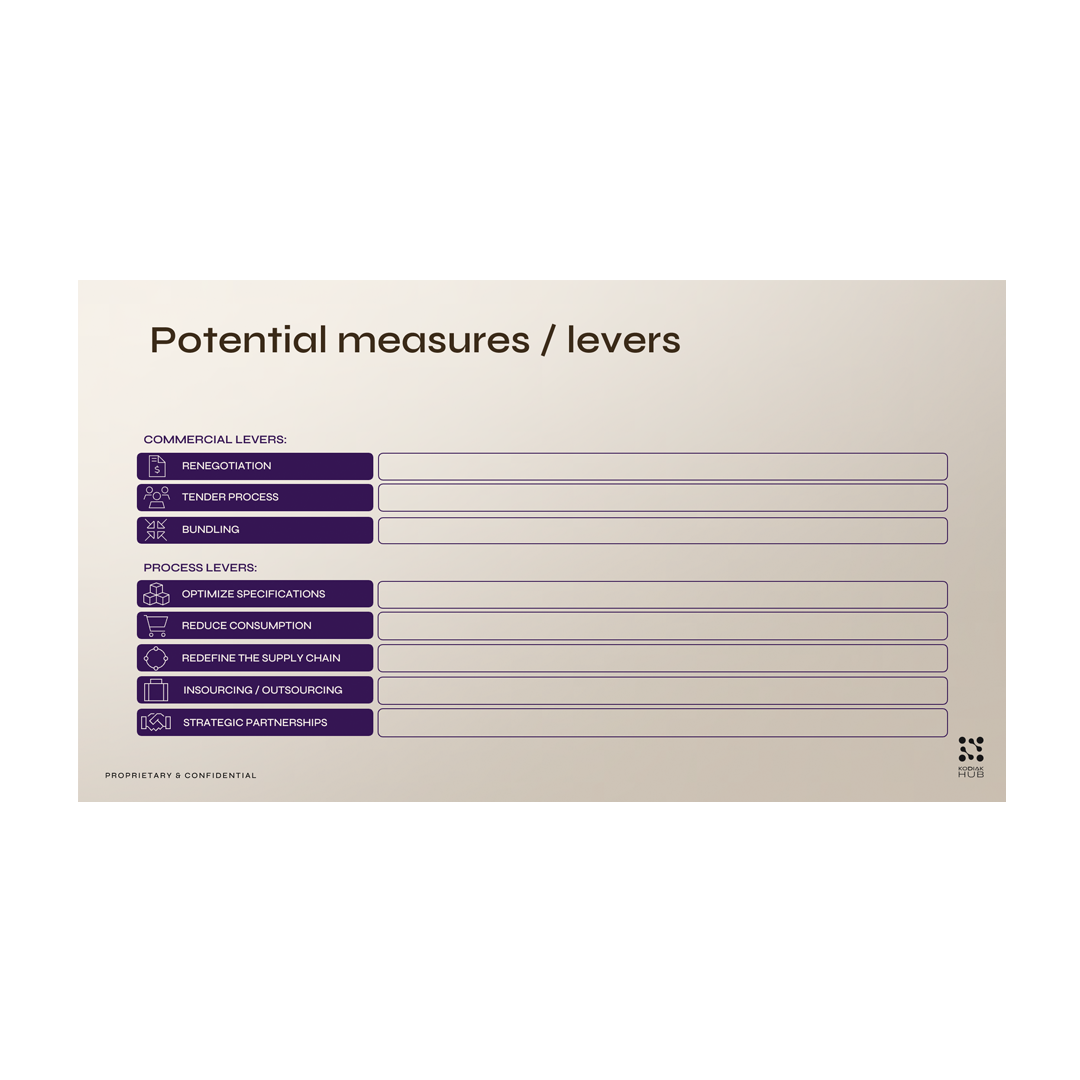
4. Select Relevant Levers
Select the relevant commercial and process levers applicable to the category. Assess each lever to determine its potential impact on both operations and finances. Identify and outline feasible alternatives for these levers, evaluating their benefits and limitations. Document these options clearly to facilitate informed decision-making and align them with your strategic goals. This concise documentation will ensure all stakeholders are informed and can reference the details in future discussions.
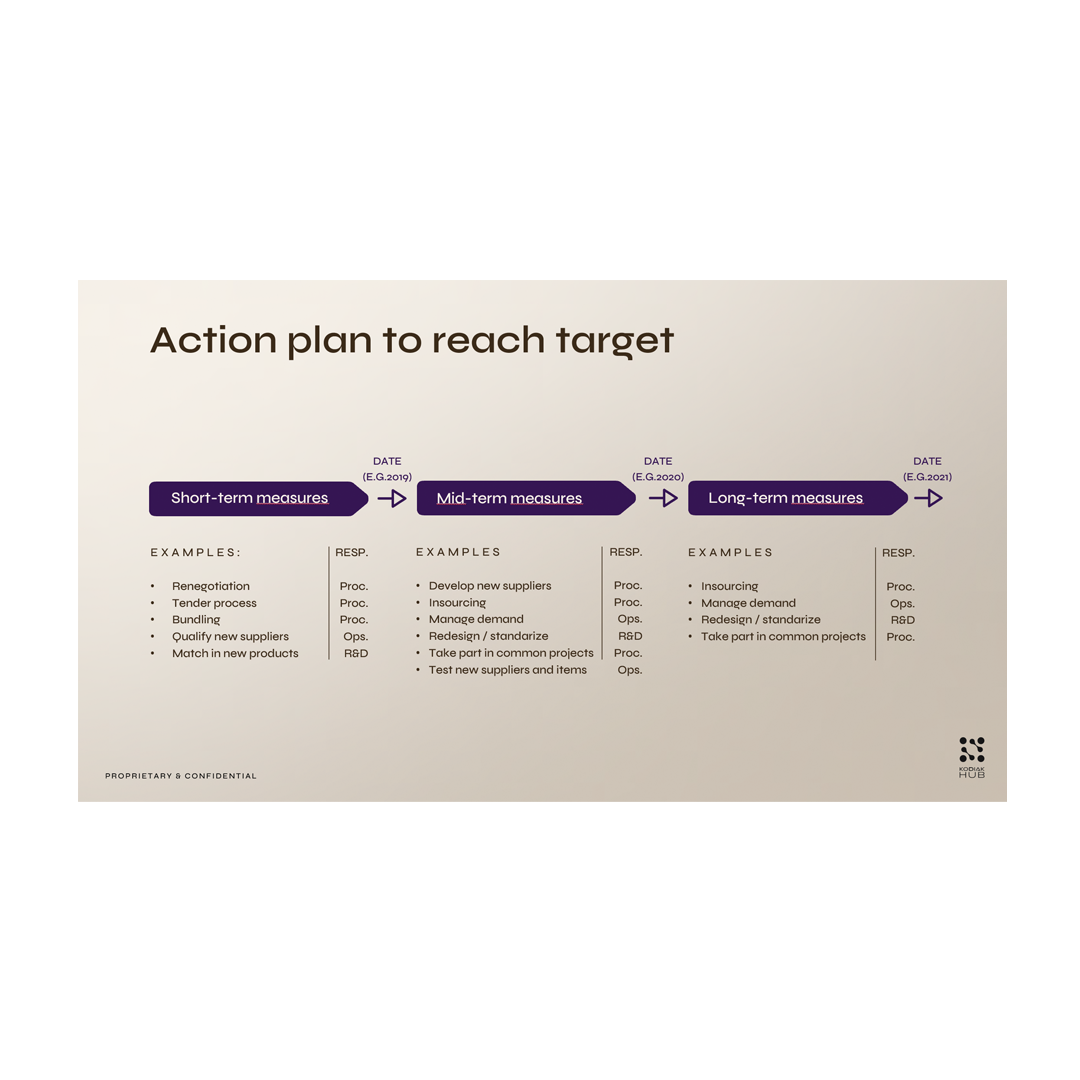
5. Set an Action Plan
Determine the specific actions that you and your team will undertake. Develop a structured plan that organizes these actions into short, medium, and long-term objectives. Ensure that the plan clearly assigns responsibilities across the team, so everyone knows their specific roles and duties. This approach will facilitate coordinated efforts and efficient progress toward your goals..
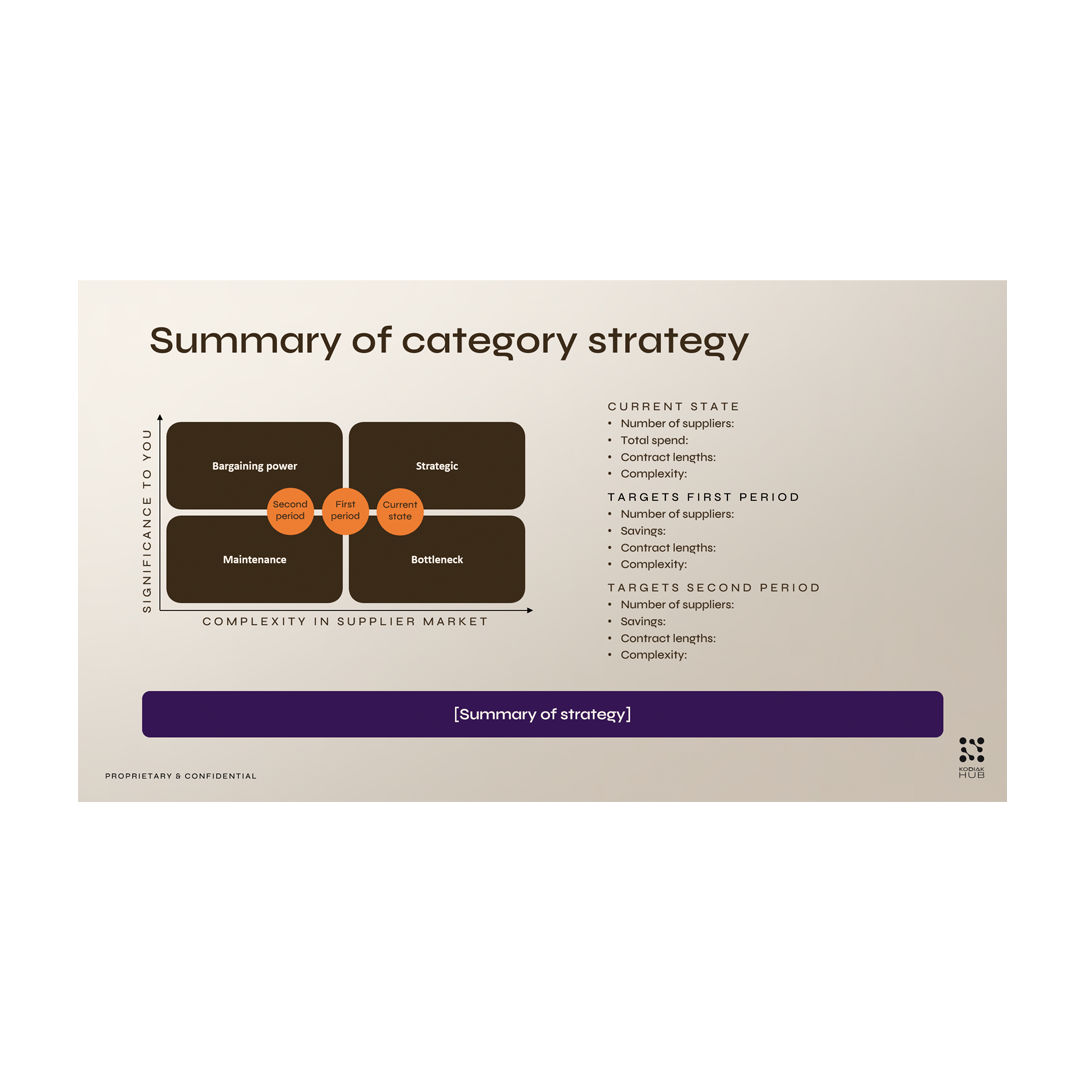
6. Summary of Strategy
Summarize the strategy on a concise "one-pager" that clearly outlines specific objectives, such as savings targets, supplier counts, contract durations, and market complexity.
Looking for a way to begin? Access our free, proven category strategy template by downloading it via the button below. No need to leave your name, email, title or anything like that - just enjoy.
This a great start! But the work is not done.
If you are truly interested in enhancing your Category Strategy for your procurement team by consolidating all your supplier data into one central hub, improving supplier segmenting, automating mundane tasks, boosting efficiency and team collaboration, then it's the perfect time to contact us at Kodiak Hub!
Book a Demo to see Kodiak Hub in Action
Fill in the form and then pick a date & time with one of our experts.
